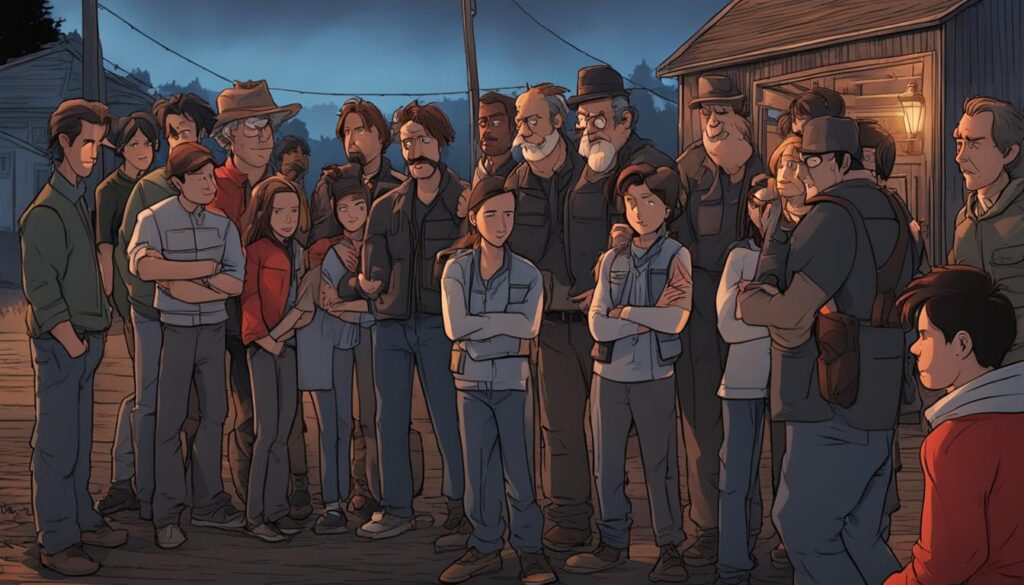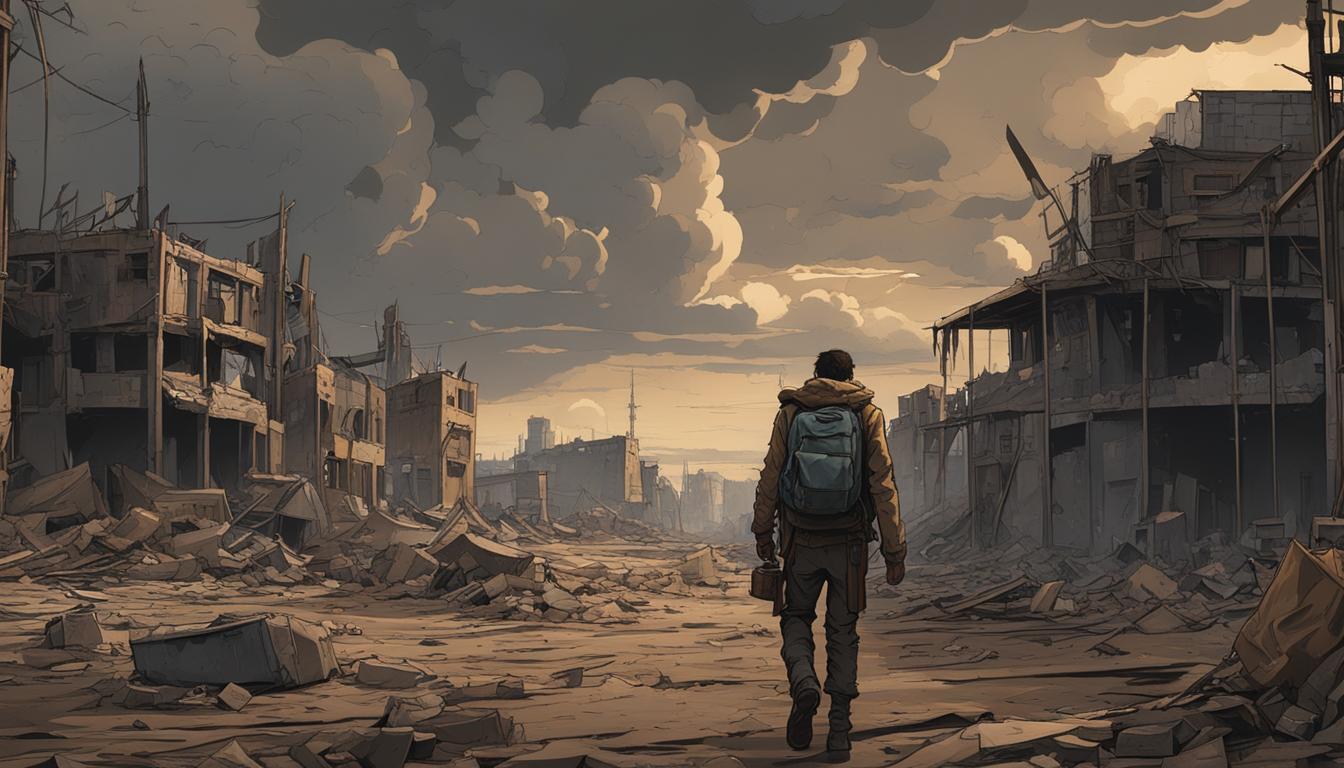Stephen King is a master of horror and fantasy fiction, and his novel “The Stand” is no exception. First published in 1978, the book has been adapted into various forms of media over the years, including a highly acclaimed 1994 miniseries. The Stand movie adaptation is still widely regarded as a cult classic decades later.
The movie offers a compelling vision of a world devastated by a deadly virus, and the struggle of those left behind to rebuild a new society. With an unforgettable cast of characters and an intricate storyline, “The Stand” has captured the hearts of fans around the world and continues to be a favorite among Stephen King enthusiasts.
In this article, we’ll explore the lasting legacy of the 1994 “The Stand” movie adaptation, from its origins as a novel to its impact on pop culture and beyond.
Key Takeaways
- “The Stand” 1994 movie adaptation is a cult classic loved by horror and fantasy enthusiasts all around the world.
- The story of “The Stand” takes place in a post-apocalyptic world where a deadly virus has wiped out most of the population.
- The movie features a talented cast of actors who portray a diverse and complex group of survivors.
- “The Stand” explores themes of hope, survival, and the struggle between good and evil.
- The legacy of “The Stand” continues to influence and inspire filmmakers and writers today.
Stephen King’s Novel “The Stand”
Stephen King’s novel “The Stand” was first published in 1978 and quickly became a bestseller. King’s reputation for crafting gripping horror and fantasy stories had already been established through his earlier works, such as “Carrie” and “Salem’s Lot,” but “The Stand” demonstrated his mastery of the post-apocalyptic genre.
The novel tells the story of a deadly pandemic that wipes out most of the world’s population and follows a group of survivors who must navigate a dangerous and chaotic world overrun by violence and despair. Along the way, they encounter both friend and foe, as they strive for a new future and hope for humanity’s survival.
With its complex plot, memorable characters, and thought-provoking themes, “The Stand” quickly became a cult classic. Its success paved the way for King’s further exploration of post-apocalyptic scenarios in later works such as “The Dark Tower” series.
The Stand Movie Adaptation
Bringing Stephen King’s epic novel “The Stand” to the big screen was a daunting task. Director Mick Garris and his team faced several challenges in adapting the complex storyline and the numerous characters into a feature film.
One of the biggest challenges was the length of the novel, over 1,000 pages long. As a result, the film had to be edited down to a manageable length, while still retaining the essential elements of the story. This required some difficult decisions about what to keep and what to cut out.
The casting of the characters was another significant challenge. The novel features a large and diverse cast of characters, each with their own unique background and personality. Finding actors who could embody these characters and make them believable on screen was crucial to the success of the film.
The cast of the movie included some of the biggest names in Hollywood, such as Gary Sinise, Molly Ringwald, and Rob Lowe, as well as lesser-known actors who brought their own talents to the project.
The special effects used to create the post-apocalyptic world of “The Stand” also posed a significant challenge. The film’s budget was limited, so the special effects had to be created on a smaller scale without sacrificing their impact on the story. The result was a visually stunning movie that captured the essence of King’s novel.
The Stand movie adaptation was a critical and commercial success, bringing the epic story to life on screen and introducing new generations of fans to Stephen King’s work.
Casting and Characters
One of the standout aspects of “The Stand” is its talented cast of actors who brought the diverse and complex characters to life. The casting was a meticulous process, with each role carefully considered to ensure the actors embody the essence of the characters.
The leading role of Stu Redman was played by Gary Sinise, who brought his signature intensity and sensitivity to the character. Molly Ringwald portrayed Frannie Goldsmith, a pregnant woman who joins the survivors on their journey. Rob Lowe played Nick Andros, a deaf and mute survivor with uncanny intuition. Jamey Sheridan delivered a chilling performance as the villainous Randall Flagg, the embodiment of evil in the post-apocalyptic world.
Other notable actors who took on roles in “The Stand” include Miguel Ferrer as Lloyd Henreid, a prisoner turned follower of Flagg, and Ruby Dee as Mother Abagail, a spiritual leader who guides the survivors.
Overall, the cast of “The Stand” delivered memorable performances that helped to bring the characters and their respective storylines to life. Their collective talent and dedication to their roles contributed to the movie’s enduring cult status.
Apocalyptic World of “The Stand”
The storyline of “The Stand” is set in a bleak and terrifying post-apocalyptic world, where a lethal virus has wiped out most of humanity. As the survivors struggle to cope with the aftermath of the pandemic, they are thrust into a battle between good and evil, waged by powerful supernatural forces.
Amidst this chaos, the story follows a group of diverse and compelling characters who find themselves drawn together by fate, each with their own unique strengths and weaknesses. There is the stoic and pragmatic Stu Redman, the enigmatic Mother Abagail, the troubled former rockstar Larry Underwood, and many more, each of whom is fighting for their own survival and the fate of the world.
Through stunning visuals and heart-pounding action, “The Stand” brings to life a world that is both incredibly dangerous and incredibly alluring, with a story that keeps viewers on the edge of their seats. It deftly explores themes of morality, faith, and sacrifice, while also presenting a terrifying vision of what could happen if the world were to end.
“King has written a novel that takes on many of the most important issues that confront us as human beings, wrestling with questions of faith, morality, and the nature of good and evil, all while providing a gripping and thrilling story that keeps readers hooked until the very end. ”
Themes and Symbolism
Stephen King’s “The Stand” is more than just a post-apocalyptic story; it is a powerful exploration of the human condition. The themes and symbolism in the story add layers of depth and complexity, making it a work of art in its own right.
The struggle between good and evil is a central theme in “The Stand.” As the survivors are forced to choose sides in the battle for humanity’s future, they confront their own vulnerabilities and learn to rely on their own inner strength to persevere.
The power of hope is another important theme, as the survivors face seemingly insurmountable challenges. They must cling to hope in order to maintain their will to live and fight for a better future.
Finally, the human struggle for survival is a pervasive theme throughout the story. The characters are forced to confront their own mortality and make difficult choices in order to survive.
“The Stand is really about survival – your survival spiritually, emotionally, and physically.” – Gary Sinise, who played Stu Redman in the 1994 TV miniseries adaptation of “The Stand”.
The symbolism in “The Stand” is also worth noting. The journey of the characters can be seen as a metaphor for the human experience, with all the trials and hardships we face in our own lives. The recurring symbols of light and dark, fire and water, and the eagle and the wolf, for example, add depth and meaning to the story.
Through its themes and symbolism, “The Stand” offers a powerful meditation on the human experience, and a testament to the power of hope and inner strength. It is no wonder that the story has captured the imaginations of audiences for generations to come.
Critic Reviews and Reception
“A complex, haunting, and deeply affecting epic” – The Los Angeles Times
The Stand has received both critical acclaim and devoted fans since its release in 1994. The post-apocalyptic setting, intricate plot, and memorable characters have captivated audiences and served as a testament to Stephen King’s storytelling prowess.
The film was well-received by fans and critics alike. Roger Ebert said in his review, “The movie ultimately boils down to good vs. evil, and is essentially a physical clash… the movie didn’t disappoint me and I enjoyed the way it weaved its many plot lines together.”
Even with its acclaim as a cult classic, the movie has had its detractors. Despite this, the film has continued to amass a devoted following and has influenced a generation of filmmakers in the science fiction and horror genres.
Legacy and Influence
The 1994 movie adaptation of “The Stand” has left a lasting legacy on pop culture and continues to influence subsequent apocalyptic and post-apocalyptic stories. The film’s exploration of good versus evil, humanity’s resilience, and ultimate survival resonates with audiences to this day.
The success of “The Stand” also solidified Stephen King’s already established reputation as a master of horror and fantasy genres. The novel’s popularity and subsequent film adaptation have cemented its significance within King’s body of work and contributed to his enduring literary legacy.
“Stephen King’s ‘The Stand’ continues to enchant and terrify readers and viewers alike, exploring the human spirit and the eternal struggle between good and evil.”
Behind the Scenes
As with any movie production, “The Stand” faced its fair share of challenges and creative decisions on set. One scene that proved particularly difficult was the explosive finale, which required intricate planning and precision to execute safely. On a lighter note, director Mick Garris fondly recalls the cast and crew bonding over shared meals during the intense shoot.
One creative decision that had a significant impact on the movie was the inclusion of an entirely new character, “The Kid,” who serves as a minor antagonist in the film. This addition was made to add depth and nuance to the storyline, and to allow the filmmakers to explore new themes and ideas.
Overall, the production of “The Stand” was a challenging but rewarding experience, resulting in a gripping and memorable movie that has stood the test of time.

Conclusion
In conclusion, “Stephen King’s The Stand” 1994 movie remains a cult classic for a reason. Its gripping narrative, memorable characters, and timeless themes continue to captivate audiences of all ages. The enduring popularity of the film is a testament to Stephen King’s storytelling prowess and the talented cast and crew who brought his vision to life on screen.
With its exploration of the themes of good and evil, hope, and human survival, “The Stand” has rightfully earned its place as a classic in the post-apocalyptic genre. The film’s impact on pop culture and subsequent works in the genre further solidifies its legacy and influence among fans and critics alike.
Through the challenges faced during production and the creative decisions made to enhance the storytelling, “The Stand” has cemented its place as a beloved classic that continues to captivate audiences to this day. Whether a longtime fan or a newcomer to the story, “Stephen King’s The Stand” offers a thrilling and unforgettable journey through a world ravaged by a deadly pandemic and the enduring spirit of humanity in the face of adversity.



